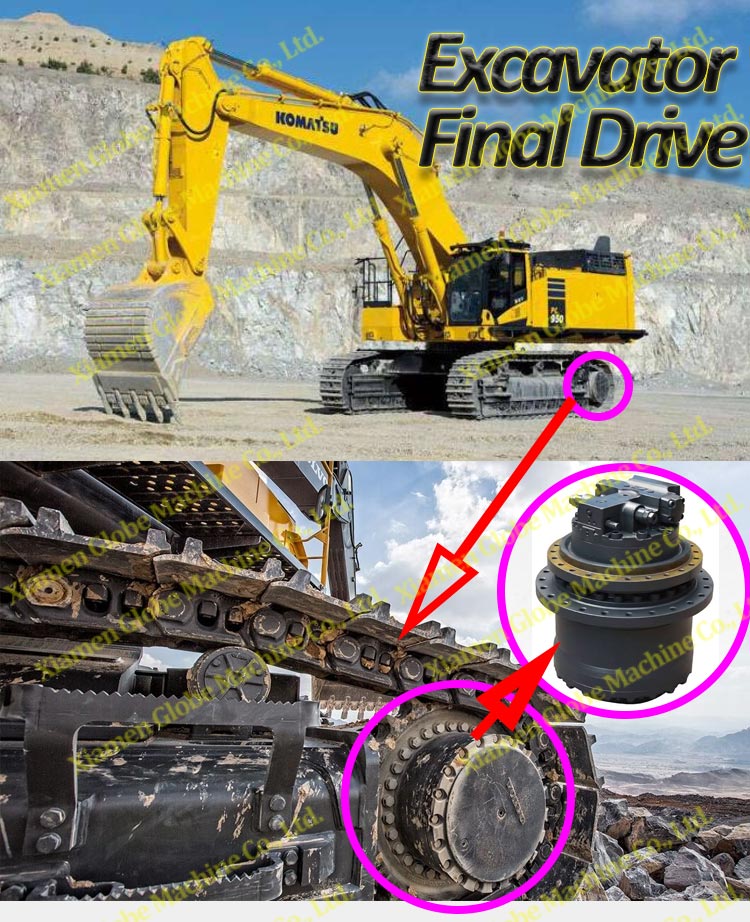1. Power Transmission and Matching
The final drive is located at the end of the travel drive system. Its primary role is to convert the high-speed, low-torque output of the hydraulic travel motor into low-speed, high-torque output through an internal multi-stage planetary gear reduction mechanism, and transmit it directly to the track drive sprocket or wheel hub.
Input: Hydraulic motor (typically 1500–3000 rpm)
Output: Drive sprocket (typically 0–5 km/h)
Function: Matches speed and torque for optimal travel performance.

2. Torque Amplification and Traction Enhancement
By providing a large gear reduction ratio (commonly 20:1–40:1), the final drive multiplies the hydraulic motor’s torque several times over, ensuring the machine has sufficient tractive force and climbing ability.
Essential for operating in high-resistance conditions such as earthmoving, slopes, and soft ground.
3. Load Bearing and Shock Absorption
Construction equipment often encounters impact loads and torque shocks (e.g., excavator bucket hitting rock, dozer blade striking an obstacle). These loads are directly absorbed by the final drive.
Internal bearings and gears are made from high-strength alloy steel with carburizing and quenching treatment for impact resistance and wear durability.
The housing is typically made from high-toughness cast steel to withstand external shocks and axial/radial loads.
4. Sealing and Lubrication
The final drive operates in harsh environments with mud, water, and abrasive materials, requiring high sealing reliability.
Commonly uses floating face seals (mechanical face seals) or dual-lip oil seals to prevent oil leakage and contamination ingress.
Internal gears are lubricated with gear oil (oil bath lubrication) to ensure proper working temperature and extended component life.
5. Structural Integration and Maintainability
Modern final drives are often integrated with the hydraulic travel motor into a travel reduction assembly for easier machine layout and maintenance.
Modular design allows for quick replacement.
Typical internal structure includes: hydraulic motor → brake unit (multi-disc wet brake) → planetary gear reducer → sprocket flange connection.
Post time: Aug-12-2025




